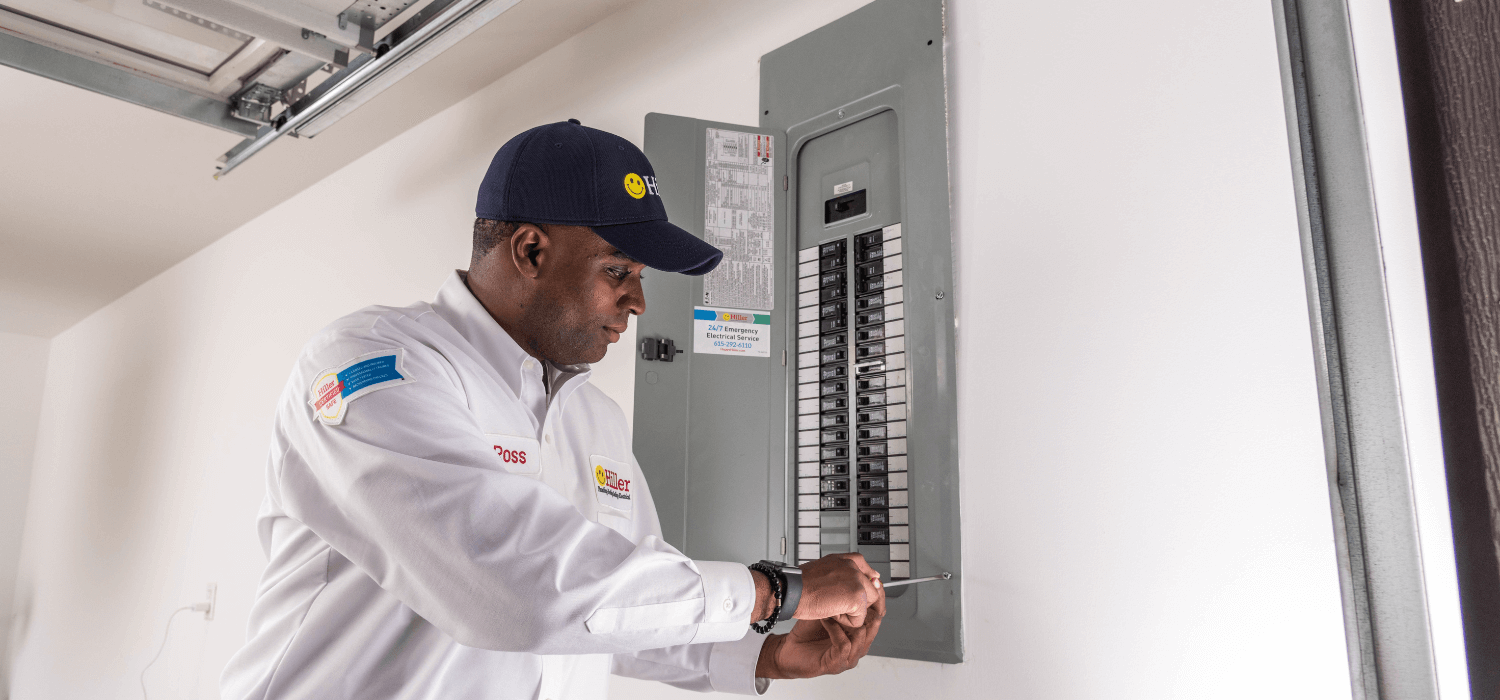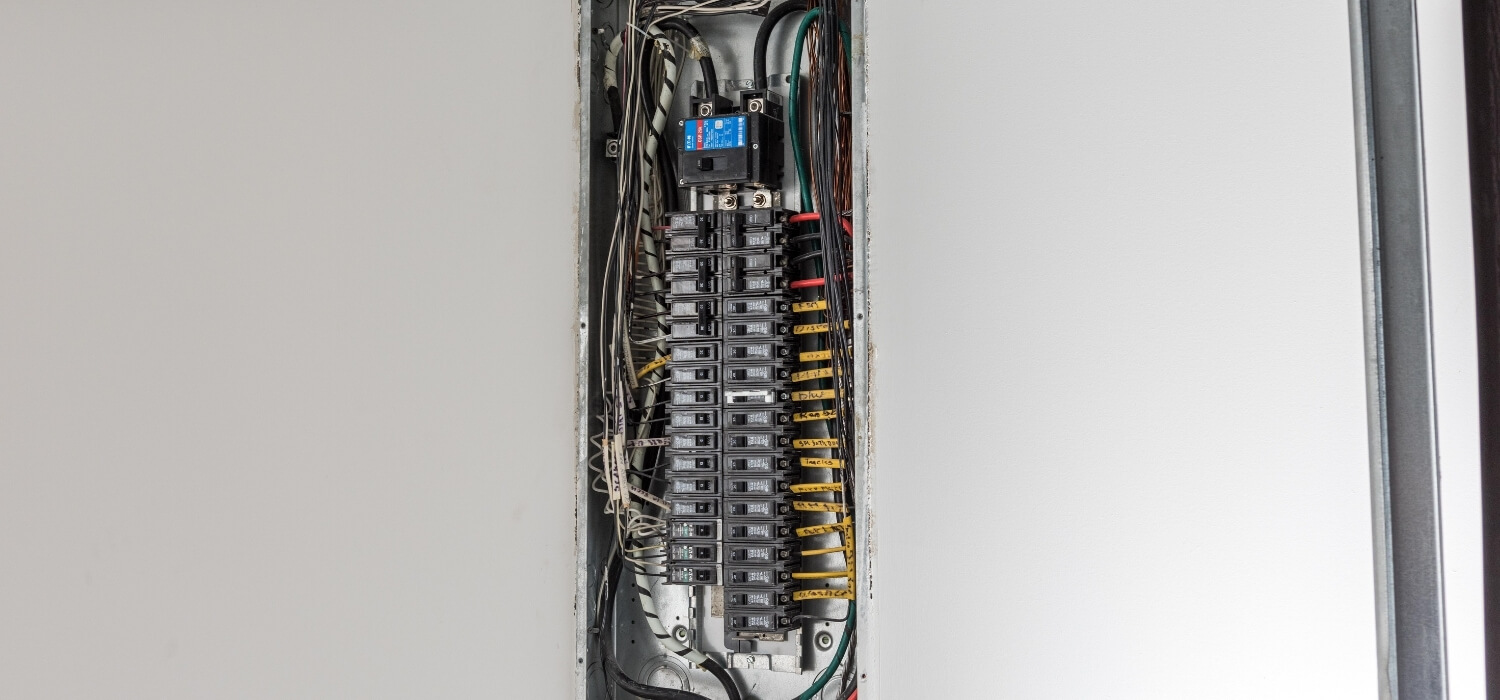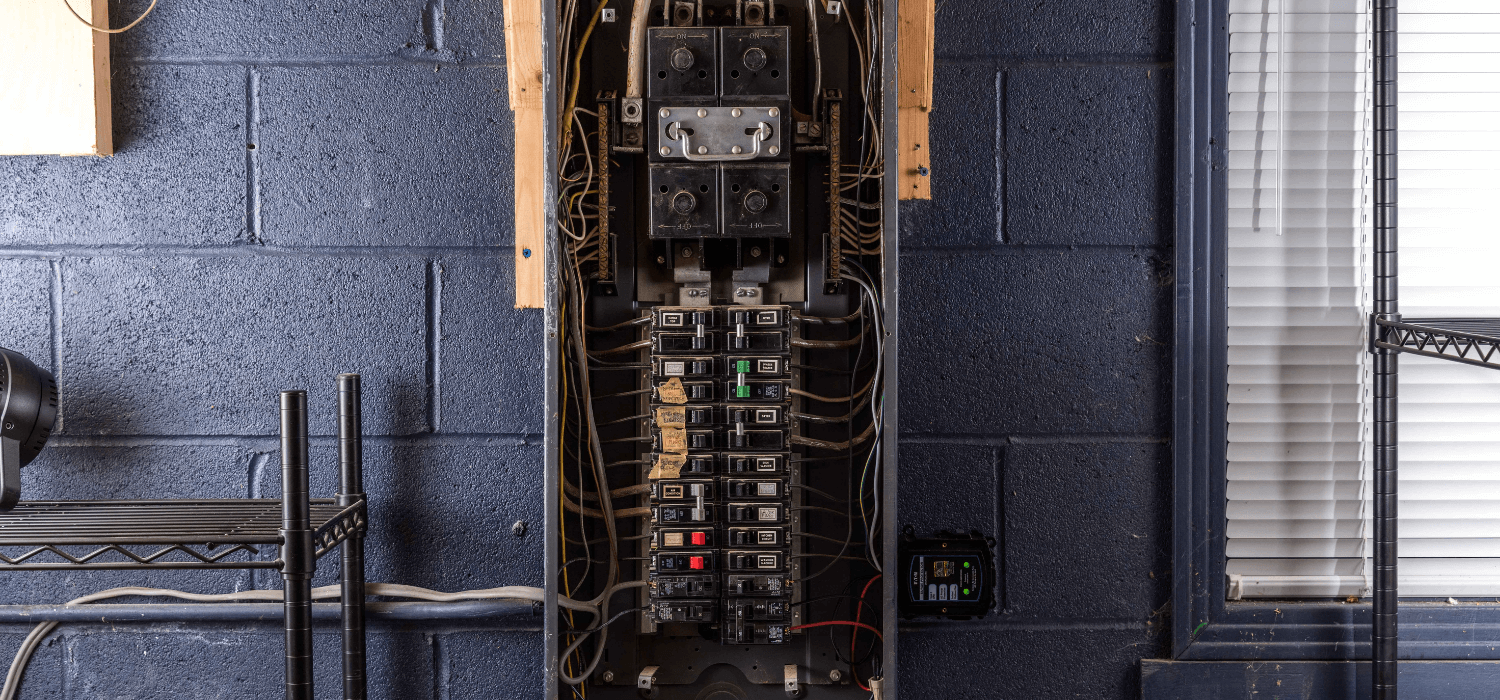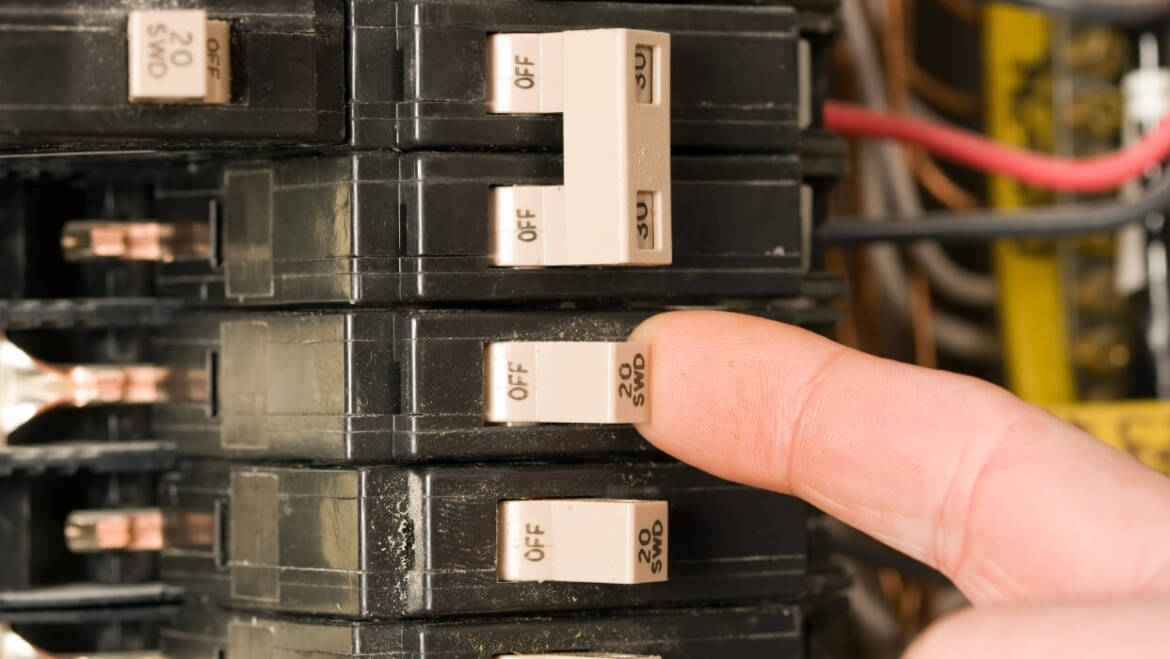Posted September 12, 2025
Did you know that electrical fires account for 51,000 fires a year? The circuit breaker is a crucial part of the electrical chain to prevent these types of accidents.
Of course, if there’s a fault, you could try circuit breaker panel replacement on your own. But would you want to put yourself or your family at risk? Read on to find out about circuit breaker panel replacement and how to keep your home or business safe.
What Is a Circuit Breaker?
Circuit breakers are used in power systems to either break or allow electricity to pass through the apparatus. They literally do what their name says and break the electrical circuit, usually for safety reasons.
A circuit breaker panel controls all of the power in your home. When a power point, light, or appliance stops functioning, you usually go to the breaker box to reset it. A simple switch flick works, and you can get on with your day.
What Causes Issues With a Circuit Breaker?
Breaker failure can occur when a circuit fault causes a circuit breaker to trip too frequently. This wears out the internal switch linkage. Faults may also happen if you have used the breaker switch to turn the electricity on and off too often. It is a harmful habit that you should avoid.
You may have to replace a single breaker or the whole panel. Let’s take a look at how to do this.
Circuit Breaker Panel Replacement – A Guide
Fault current levels via breakers substantially influence circuit breaker failure likelihood. Whenever a breaker fails for any cause, the solution is to remove the old one and replace it.
Circuit breakers are very affordable and simple to repair if you have a basic grasp of electrical circuits. It is not a project for everyone because it requires working at the main service panel with the safety cover off. Although the procedure is not complex, it is easier than many typical wiring projects but can still be very dangerous.
The main power bus bars expose as you change a circuit breaker, posing a high risk of significant shock if you are not careful. All circuits for living spaces must now incorporate AFCI protection. This is often accomplished by installing dedicated AFCI circuit breakers. This is something you may need a qualified electrician for.

Professional electricians are obliged by law to install an AFCI circuit breaker. The law indicates that you should do the same thing if you want to comply with the code.
Now you’re nervous about replacing the circuit breaker yourself. You need not worry because electricians at Hiller provide circuit breaker repair. We also provide circuit breaker panel replacement to guarantee that all of your appliances, equipment, and gadgets are operating safely and effectively.
When Do You Need New Circuit Breakers?
Are your outlets’ surfaces warm to the touch, or do they have burn marks? Do the lights in your house occasionally flicker or flash on and off? If this is the case, your electrical system may be bearing too much load and you should upgrade your panel.
When fuses are ineffective or insufficient, circuit breakers complete the job in tandem to detect and isolate problems. So, if you are still using fuses, it’s time to modernize with a circuit breaker panel.

All concerns relating to the electric service panel are the responsibility of the owners of single-family houses. However, most of them will require assistance in deciding when they need a service upgrade and replacement of the circuit breaker panel.
Breakers have a life expectancy of 25-30 years, which is also true for your panel. It is critical to understand the age of your board to figure out if a replacement is due.
Understanding Your Electrical System
The main distribution point for electrical circuits in your home is an electrical circuit breaker panel. Gray metal panels usually appear in a garage, utility room, or basement. It houses all of your home’s electrical circuit breakers.
Electrical panels are also where your house receives power from the utility provider. The circuits distribute the electricity via the panel to your lights, appliances, and technological gadgets.
The utility company’s wires supply power to your home, then it travels through an electrical meter, records your power use, and finally into the circuit breaker panel. A vast disconnect between the meter and the board can be present in some systems while most newer systems have the meter near the board.
What Is a Circuit Breaker Panel Made Of?
The service entry wires connect to two big terminals towards the top of the panel, known as lugs. Unless the utility provider turns off the electricity, these lugs are constantly powered. The lugs and the wire connected to the panel box are protected by a flat metal plate known as the dead front cover. It is what you see when you open the breaker panel door.

The finished front cover has cutouts that give access to all of the breakers, and that’s all most homeowners need to know. If you can’t see what you’re doing, don’t remove the dead front cover.
Signs of Circuit Breaker Panel Problems
Have you noticed your circuit breaker panel showing symptoms of deterioration? The most prominent sign shows sparking or smoke emerging from the device. You could detect black markings or smell burning. All of this points to overheating. If you see it, book an appointment with a certified electrician online from to take a look.
Water damage appears as a white, chalky residue in the panel and rust or corrosion on the board or wiring. It is more than just aesthetic harm. Water seeping into your breaker panel causes significant issues.
At times, the breakers may trip more often. Every home has instances when you need to reset the breaker. This indicates that it is doing its function, but it should not occur regularly. Similarly, if you see flickering lights or breakers that refuse to reset, you have an electric problem that a professional needs to resolve.
What is an Electric Panel?
Electrical panels consist of a metal box with a door installed in a wall in a remote part of the house. Inside are all of your home’s breaker switches. Breaker switches toggle on and off. They’ll also shut down automatically if there’s too much electrical current flowing through them – after all, that’s what they’re designed to do.

A circuit breaker controls the electricity for the entire house and is located in the electrical panel. You’ll also notice separate breakers, each of which is in charge of supplying energy to a specific area of your home. Each breaker has labels with the section of the house it regulates.
Power is transmitted to your electrical panel from an exterior electrical meter. Using the main breaker on your electrical panel can turn off the main power supply. Your primary breaker also indicates how much amperage is available.
Signs You Should Replace Your Electric Panel
As you know, your electric panel is the core of your home’s power supply and its first line of defense against overload. So, it’s critical to keep it in good operating order and at the correct amperage. With the proper update and electrical wiring, you can avoid dangerous fires like this.
If your home is still using fuses, it’s time to modernize. Fuses are not as safe or dependable as circuit breakers, and insurance companies frequently punish you for using an outdated system.

Examine the amperage going into your panel. The installer will have noted towards the top of the board. Your older home probably has 60 amp wiring. For a typical dwelling, this amount of energy is no longer sustainable.
To securely power a contemporary house, you should ideally have a rating of 200 amps. If your amperage is low, replacing your electrical panel is the best option.
How To Replace a Circuit Breaker Panel
The great majority of homeowners should never consider replacing a circuit breaker panel as a do-it-yourself operation. The individual doing the panel replacement is exposed to potentially lethal voltage levels. What should you do in such a situation?
You should be aware that this task necessitates the use of at least one experienced electrician. The cost of replacing a circuit breaker panel ranges from $800 to more than $3,000, depending on the numerous elements at play. Unexpected challenges or hurdles might arise for electricians.
Once you’ve decided on an electrician with whom you’re comfortable working, both of you will need to complete some preliminary work before the job can begin. Transparent pricing could be something to consider when making this decision.
Types of Circuit Breakers
Here are the different types of circuit breakers:
- Oil Circuit Breaker
- Air Circuit Breaker
- Vacuum Circuit Breaker
- SF6 Circuit Breaker
Air Circuit Breaker
This type of circuit breaker functions by using an arc contained in small atmospheric pressure. Using an air circuit breaker up to 15KV is still a desirable option. This is because the alternative of an oil model may catch fire at this voltage.
Air circuit breakers come in two different types:
- Airblast circuit breaker
- Plain air circuit breaker
SF6 Circuit Breaker
An SF6 circuit breaker has current-carrying contacts that work in sulphur hexafluoride gas. It has a strong electro-negativity and a great insulating property. When a free electron collides with an SF6 gas molecule, a negative ion generates and absorbs that gas molecule.
The resulting negative ions will be significantly heavier than a free electron. As a result, compared to other common gases, the total mobility of the charged particle in SF6 gas is substantially lower. The mobility of charged particles is primarily responsible for current flow through a gas. As a result, it develops exceptionally high dielectric strength for heavier and less mobile charged particles in SF6 gas.
Because of its low gaseous viscosity, this gas has excellent heat transmission properties. SF6 is 100 times more effective than an air circuit breaker in arc quenching. It is utilized in medium and high voltage electrical power systems ranging from 33KV to 800KV.
Vacuum Circuit Breaker
A vacuum circuit breaker is a circuit that uses a vacuum to extinguish an arc. It possesses dielectric recovery characteristics, good interruption, and can stop the high-frequency current caused by arc instability, which superimposes the line frequency current.
Under typical working conditions, the VCB principle of operation will have two connections called electrodes that will stay closed. If a fault develops in any system section, a trip coil of a circuit breaker gets activated, and contact is finally disconnected.
Contacts in the breaker, which operate in vacuum conditions (10-5 to 10-7 Torr), form an arc due to the ionization of metal vapors in the contacts. The arch is swiftly extinguished here because the electrons, metallic vapors, and ions created during the arc condense fast on the CB contacts’ surface, leading to rapid dielectric strength recovery.
Oil Circuit Breaker
This type of circuit is similar to an air breaker but uses oil instead. Mineral oil is the preferred type for most applications. It works as a better insulator than air. The moving and stationary contacts submerge in insulating oil. When current separates, carrier contacts in the oil evaporate and degrade hydrogen gas, resulting in a hydrogen bubble surrounding the arc.
The other two types of Oil Circuit Breaker are:
- Minimum oil circuit breaker
Call a Professional to Repair your Circuit Breakers
Circuit breaker panel replacement makes a positive difference in your house and life. You feel relaxed because there are no more sudden flickering lights or nervousness while disconnecting something from an electrical socket.
Moreover, replacing a circuit breaker is not a fundamentally complex task. Still, it may generate anxiety, even for expert DIYers, because it requires working inside the main circuit breaker panel, where the risk for lethal shock is always there.
If you are unsure of your abilities or the circuit breaker panel is old or unique, contact us today!

Daily Promotion
$99 Electrical Inspection
Seasonal safety starts with a $99 electrical inspection.
Get Promotion
Whether you require installation, repair, or maintenance, our technicians will assist you with top-quality service at any time of the day or night. Take comfort in knowing your indoor air quality is the best it can be with MOE heating & cooling services Ontario's solution for heating, air conditioning, and ventilation that’s cooler than the rest.
Contact us to schedule a visit. Our qualified team of technicians, are always ready to help you and guide you for heating and cooling issues. Weather you want to replace an old furnace or install a brand new air conditioner, we are here to help you. Our main office is at Kitchener but we can service most of Ontario's cities
Source link


